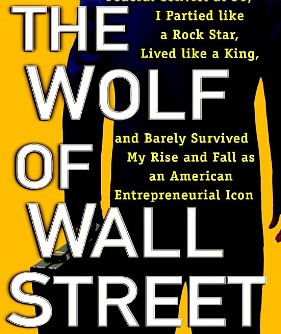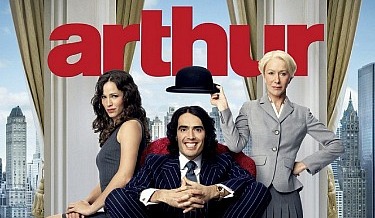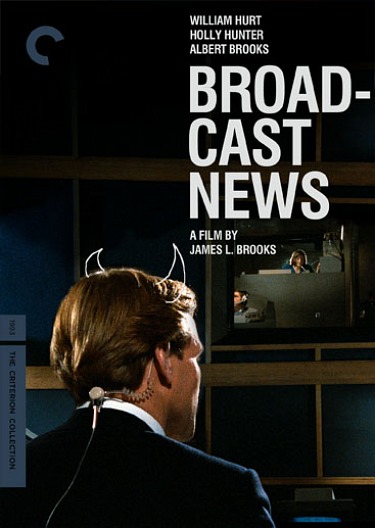Is Natalie Portman ever going to make another good movie, or is it going to be like this from here on? The formula used to be “make one for them, and then one for yourself.” Portman’s formula, apparently, is make a single great Darren Aronofsky film and then completely trash your hardcore, super-devoted, high-rent actress image by appearing in three or four shit flicks in a row.
Didn't Believe It
I’m sorry, but as “well done” at Clint Eastwood‘s (or Scanline VFX‘s) tsunami sequence in Hereafter may have seemed to some, to me it looked fake. The wave was much more furious and caused more devastation than anything I saw in the various videos that played after the real thing happened in 2004. Hereafter‘s version was obviously cool, but also a hard-drive thing — a tragedy intensified to ratchet up the gasp levels.
Union Wakeup
A 2.17 N.Y. Post story says that the 1000-plus-member Newspaper Guild is moaning over a proposal by the New York Times Co. to freeze pay over the next two years while adding an extra 5.5 hours onto the standard work week that is currently set at 34.5 hours a week. “That is an effective 16 percent pay cut,” whined NG president Bill O’Meara. He said the Times‘ proposals were “draconian” and “as they stand now would ruin the paper.”
HE reaction: Wake up and smell the 21st Century news business, dead-tree and fossil-fuel-delivery man. You’re lucky to have a job. And anyone lazy enough to bitch about working a mere 40 hours a week needs to be spanked. I work 10 to 12 hours a day and 7 days a week — a minimum of 70 hours a week. And I’m grateful as hell to have a job that I love. Due respect but I’ve nothing but contempt for jowly middle-aged slackers complaining about a 40-hour work week for a decent payday with medical, dental and retirement.
Another Chain-Pull
How long have the various trailers for Insidious (Film District, 4.1) been playing? Four, five months? I feel like I’ve seen it already. Enough tease — it’s time for the beef. The participation of Rose Byrne, Patrick Wilson and Barbara Hershey implies a cut-above thing, but still.
Right Stuff
I’d like to know who designed this poster for Kelly Reichardt‘s Meek’s Cutoff (Oscilloscope, 4.8) because it works. It has a certain authenticity, a yesteryear quality. It suggests the look of a poster for…I don’t know, some Lillian Gish or Gloria Swanson film from the 1920s, Queen Kelly or Orphans of the Storm or something in that vein.

I managed to miss this film at last year’s Toronto and New York film festivals, and also at Sundance 2011. The truth? I didn’t want to see it because of the bonnets. Here’s how I explained it on 9.29.10:
“Here comes another immensely shallow but entirely honest statement from yours truly,” I wrote. “The instant I clapped eyes on those mid-1800s women’s bonnets in those stills from Meek’s Cutoff, I said to myself, ‘I’m going to figure some way of avoiding this film for as long as I can.’
“I suspected it would be a quality-level thing because Reichardt’s Wendy and Lucy proved she’s a talented, dead-serious director. Attracted to downer-type women-facing-tough-odds stories, okay, and not exactly into narrative propulsion, but Reichardt’s films require respect and attention.
“And I didn’t care. I was going to avoid Meek’s Cutoff any way I could for as long as I could because I don’t like the gloomy symbolism of floppy bonnets on pioneer women’s heads. To me bonnets spell sexual repression and constipation and tight facial muscles. They suggest the existence of a strict social code (i.e., the film takes place in 1845) that I don’t want to sample or get close to because I know it’s all about men with awful face-whiskers and the wearing of starched collars and keeping everything buried and smothered and buttoned-up among the wimmin folk.”
Meek’s Cutoff is basically a western in which “a braggart, Stephen Meek (Bruce Greenwood), meets his match in a courageous woman (Michelle Williams) after he is hired by three families to lead them through Oregon’s Cascade Mountains so that they may start new lives on the other side. As their water dwindles and they disagree over the treatment of a captured Native American, the group questions Meek’s dependability and cracks under pressure.”
For what it’s worth I’ve moved past my initial feelings and am now ready to experience Meek’s Cutoff, in large part because of this poster.
Again
As a follow-up to yesterday’s announcement about Martin Scorsese, Leonardo DiCaprio and Alexandra Milchan intending to finally produce, after years of delay, a film version of Jordan Belfort‘s “The Wolf of Wall Street,” here’s something I wrote about this project nearly four years ago:

“Boiler Room and Wall Street are both about young, lean, hungry-for-money guys (a) gaining entry to the world of high finance, (b) learning the ropes, making big bucks and getting a little drunk on the juice of it all, and (c) eventually going too far, getting busted and crashing into a hole of shame and disrepute.
“Now we have a third one to process — a big-screen adaptation of Jordan Belfort’s ‘The Wolf of Wall Street’ (Bantam, 9.25.07) with Martin Scorsese directing, Leonardo DiCaprio starring and Terence Winter writing the script.
“Belfort’s book is about how he became one of Wall Street’s most predatory film-flam artists, plying the trade of ‘penny stock’ trading.
“A Page Six summary says that Belfort’s Stratton Oakmont group “pulled off pump and dump schemes in which fast-talking boiler-room brokers ran up the prices of shares with fraudulent phone pitches.” The item says that whatever money Belfort makes off the book and the film ‘would immediately be seized,’ that ‘he still owes a fortune to investors, [having] made $13 million in restitution with $75 million or more in claims.’
“Question is, what is there to say about another high-hormone blue-chip cautionary tale? We know all about greedy young guys in suspenders who will do anything to get to the top, and we know what happens to most of them sooner or later, so…what’s new?”
Elbowed Aside
Since writing Wednesday’s story about whether Arthur‘s teaser poster misleads by omitting Greta Gerwig, the ostensible female lead (i.e., she plays the same role that Liza Minnelli had in the 1981 original), a friend sent me a 10.17.09 draft of Peter Baynham‘s 117-page script. I read it right away, and without being too specific I can confirm that Gerwig does indeed have the “Minnelli role” in this draft, which is to say the dominant one as far as a third-act resolution is concerned.

To repeat, a Warner Bros. spokesperson said yesterday that the current poster is a teaser, and that another piece of Arthur art (possibly to feature Gerwig) will be seen down the road. But the fact remains that for the time being, Warner Bros. marketing has (a) kept the romantic female lead off the poster and (b) shown the secondary female lead (i.e., Jennifer Garner) instead, obviously because her name means something to Eloi ticket buyers while Gerwig’s means zip. Unless Jared Stern’s rewrite of Baynham’s script has switched things around entirely (which is highly unlikely), this is a deliberate hoodwink maneuver as far as your average ticket-buyer is concerned. I’m not saying a major studio hasn’t done this before, but I can’t think of any examples.
The teaser trailer pretty much eliminates Gerwig also. She’s seen in two brief cuts early on, and has one line (“Who are you people?”). The basic impression is that Arthur is a three-way relationship story between Russell Brand, Helen Mirren and Garner.
Gerwig will almost certainly benefit from Arthur, as any lead actress in any half-decent, studio-funded romantic comedy would. (For what it’s worth, Baynham’s script is spirited and funny-dopey — not a half-bad “read.”) But marketing-wise she’s definitely being shafted as we speak.
The Arthur poster is analagous, to use a fictitious example, to a poster of Warren Beatty‘s Heaven Can Wait showing Beatty (i.e., Joe Pendleton/Leo Farnsworth), Charles Grodin (as Tony Abbott, Farnsworth’s administrative assistant) and Dyan Cannon (as Farnsworth’s scheming and unfaithful wife)…but not Julie Christie‘s Betty Logan, the romantic female lead.
Or, if you need a parallel for a young actress just breaking in (as Gerwig is into the big-studio realm), it’s like a poster for Billy Wilder‘s Sabrina (’54) showing Humphrey Bogart, William Holden and Martha Hyer (who plays a romantic also-ran)…but not Audrey Hepburn.
"Just A Tiny Little Bit…"
According to designer Eric Stillman, Broadcast News director-writer James L. Brooks didn’t like this suggested cover idea [below] for Criterion’s BN Bluray. And yet it’s quite obviously the best of all the options. “I like it because you can read it as an indictment of William Hurt,” Stillman writes, “or you can read it as Albert Brooks‘ character off to the side, childishly scribbling over his rival’s head.”

Due respect, but Brooks having turned this one down tells you something about how sharp his instincts are these days. Here, by the way, is the second-best option, which Brooks also blew off.
Can't Go There
I’ve just sent in my final, final, double-final Gold Derby Oscar ballot, and I titled my email as follows: “I’d Rather Be Wrong About Best Picture Than Side With The King’s Speech Crowd.”
BEST PICTURE: The Social Network
BEST DIRECTOR: David Fincher (The Social Network)
BEST ACTOR: Colin Firth (The King’s Speech)
BEST ACTRESS: Natalie Portman (Black Swan)
BEST SUPPORTING ACTOR: Christian Bale (The Fighter)
BEST SUPPORTING ACTRESS: Melissa Leo (The Fighter)
BEST ADAPTED SCREENPLAY: The Social Network (Aaron Sorkin)
BEST ORIGINAL SCREENPLAY: The King’s Speech (David Seidler)
BEST ANIMATED FILM (FEATURE): Toy Story 3 (Disney, 6/18, G, trailer)
BEST DOCUMENTARY FILM (FEATURE): Inside Job (Sony Pictures Classics)
BEST FOREIGN LANGUAGE FILM: Biutiful (Mexico).
BEST ART DIRECTION: Inception.
BEST CINEMATOGRAPHY: True Grit, Roger Deakins.
BEST COSTUME DESIGN: Alice in Wonderland
BEST FILM EDITING: The Social Network
BEST MAKEUP: The Way Back
BEST ORIGINAL SCORE: The Social Network
BEST ORIGINAL SONG: “We Belong Together” (Toy Story 3)
BEST SOUND EDITING: Inception
BEST SOUND MIXING: The Social Network
BEST VISUAL EFFECTS: Inception
Oh, Hooey!
Indiewire‘s Anne Thompson is pushing (or half-pushing) a “Helena Bonham Carter could win the Best Supporting Actress Oscar” scenario. Reason #1: HBC is due. Reason #2: HBC was charming at the recent Oscar Nominee Luncheon. Reason #3: HBC is riding the King’s Speech coattails. If Thompson had briefly addressed or even mentioned the over-and-done-with Melissa Leo ad issue I might have given this some thought, but she’s just indulging in whimsy, methinks.

Car Chases Are Broken
Yesterday afternoon I saw Unknown (Warner Bros., 2.18), the latest European-set Liam Neeson paycheck actioner. I haven’t time to review it now, but it’s not bad in a “somewhat better than meh” sort of way. It’s nowhere near the level of the Bourne films, but it’s actually a touch more plausible than Taken, for what that’s worth. And it offers a winning, at times amusing performance from Bruno Ganz, so at least there’s that.
I do think, however, based on the obligatory and run-of-the-mill car-chase sequence in this film, that it’s finally time to retire the two-vehicle chase once and for all. It’s always been a stupid fantasy that one car could chase another at ridiculously high speeds for ten or twelve minutes through a major city like San Francisco (home of the original Big Kahuna car chase in Bullitt) or Paris (where the great Bourne Identity and Ronin car chases occured) or New York (The Bourne Ultimatum) or Berlin (where Unknown is set), and not have something or someone put an end to it fairly quickly.
Car chases are fine, but you have to introduce (a) traffic jams, (b) much more chaos, (c) cops and (d) the sudden abandonment of cars and/or motorcycles and running on foot and then the pursued figuring out an escape or a hiding place (nobody ever hides in a dumpster!) as he/she runs along.
You need cops most of all. Never in the history of movie car chases has a cop car ever gone in pursuit of both the chased and the chaser and pulled one of them over and given them a ticket (or cuffed them) for reckless endangerment. Not once.
Every so often you need the hunter to simply lose the hunted because of traffic snarls or a slow truck or moving van. And every so often a hunted party has to abandon the vehicle and get out and run like hell, like Matt Damon‘s Jason Bourne has done (I think) at least once. And every so often a pursued party has to steal an unlikely vehicle — a U.P.S. delivery van or a kid’s bicycle or an ice cream truck. Or — here’s a good one — the pursued has to throw a 70 year-old lady out of her car and drive off with it, and then the car runs poorly or runs out of gas. And when’s the last time a chaser went after somebody who was riding a train, like in The French Connection?
And that was just off the top of my head, There are so many different ways to enliven or reshuffle the chase formula, and yet filmmakers, it seems, rarely throw in any wackadoo moves. Or banal ones.
Arthur Switcheroo…or Not?
Will someone with a PDF of the shooting script for the new Arthur (authored by Peter Baynham and Jared Stern, based on characters by Steve Gordon) get in touch so I can straighten out a confusing issue? I’d like to know if the about-to-open remake (Warner Bros., 4.8) has changed the original story so that Liza Minnelli‘s Linda Marolla character, who wound up with Dudley Moore‘s Arthur at the end of the 1981 original, is now, in the person of Greta Gerwig, a secondary character. Or not.

Obviously the new Arthur poster more or less declares that Jennifer Garner is playing Russell Brand‘s primary love interest even though she’s playing “Susan Johnson,” the somewhat bitchy character played by Jill Eikenberry in the 1981 original — whom Moore wound up shafting. I realize, of course, that Gerwig might “be” Liza Minnelli, and that the poster image is simply a marketing decision because the Eloi (i.e., the ticket-buyers who would rather face firing squads than watch Greenberg) doesn’t know who Gerwig is.
Here’s how I put it to a couple of Warner Bros. publicity pals a few minutes ago:
“I’m really confused by the Arthur poster, guys — can you please help?
“Greta Gerwig is playing Liza Minnelli’s character in Arthur (called ‘Linda Marolla’ in the ’81 film, now called either Linda or Naomi in the new version?), and yet the new poster has a shot of Russell Brand, Helen Mirren and Jennifer Garner (who’s playing Jill Eikenberry’s character in the ’81 film, whom Dudley Moore’s Arthur ultimately dumped in the original).
“This obviously indicates to everyone that Garner is playing the principal romantic interest. So have the filmmakers totally switched the story around or what? Or are they just putting Garner on the poster because she’s a well-known star and Gerwig isn’t as well known?.”

IMDB cast list for the original 1981 Arthur.

IMDB cast list for the newbie.
4:15 pm update: A Warner Bros. spokesperson has gotten in touch and said the following:
(1) This is a teaser poster. Another piece of Arthur art will be seen down the road. (Hint: Gerwig may be featured on subsequent art?)
(2) There is a romantic relationship between Greta Gerwig and Russell Brand’s character in the film. The spokesperson indicated the ultimate outcome of this relationship, but then asked me not to repeat what she said. But it’s not tragic.
(3) Gerwig’s character is called Naomi and not Linda Marolla (as Minnelli was called in the ’81 film).
(4) The new Arthur is a reinvention and not a straightforward remake.
(5) One example of this, she said, is that Hobson, the character played by John Gielgud in 1981, is now played by Helen Mirren. But I think most of us knew that a long time ago.

